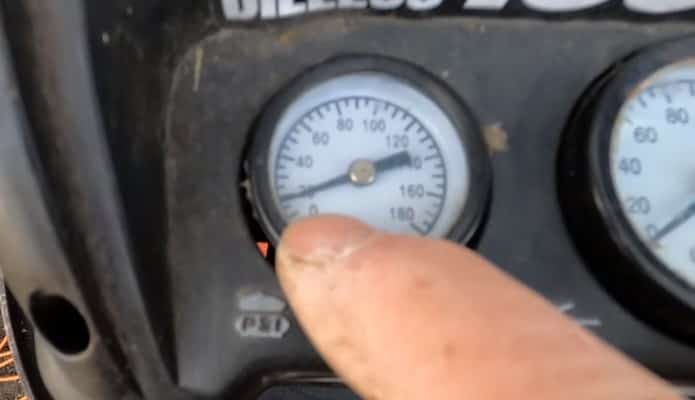To troubleshoot an air compressor not building pressure, check for leaks, inspect the intake valve, ensure the pressure switch is set correctly, and verify the pump and motor are functioning. Regular maintenance is crucial for optimal performance.
Is your air compressor acting up, leaving you puzzled as to why it's not building pressure? Don't fret – understanding the basics can save you from unnecessary frustration. In this guide, we'll unravel the common issues that may be hindering your compressor's performance. From leaks to faulty components, we'll navigate through the troubleshooting process, providing simple insights for beginners to identify and address the root causes. Let's get your air compressor back on track and working efficiently.

There are a few possible explanations if your air compressor isn't building pressure. The most common reasons are an issue with the intake valve, a blockage in the air filter, or a problem with the piston. However, there are a few other potential causes as well, which are explained below:
1. A problem with the intake valve:
The intake valve is responsible for letting air into the compressor. If the valve is damaged or not functioning correctly, it can prevent air from entering the compressor, preventing the compressor from building pressure.
Related: How to Fix Cracked Air Intake Hose?
2. A blockage in the air filter:
The air filter is responsible for keeping dirt and debris out of the compressor. If the filter is blocked, it can restrict airflow and prevent the compressor from building pressure.
Related: How to Replace Air Compressor Hose Fittings?
3. A problem with the piston:
The piston is responsible for compressing air in the compressor. If the piston is damaged or not functioning correctly, it can prevent air from being compressed, preventing the compressor from building pressure.
4. A problem with the air tank:
The air tank is where compressed air is stored. If the tank is damaged or not functioning correctly, it can prevent compressed air from being stored, preventing the compressor from building pressure.
5. A problem with the pressure switch:
The pressure switch is responsible for turning the compressor on and off. If the switch is damaged or not functioning correctly, it can prevent the compressor from turning on, preventing the compressor from building pressure.
Related: How to Adjust Cut out Pressure on Air Compressor?
6. A problem with the check valve:
The check valve is responsible for preventing air from flowing back into the compressor. If the valve is damaged or not functioning correctly, it can allow air to flow back into the compressor, preventing the compressor from building pressure.
7. A problem with the unloader valve:
The unloader valve is responsible for relieving pressure in the compressor. If the valve is damaged or not functioning correctly, it can prevent pressure from being relieved, preventing the compressor from building pressure.
Related: Where to Install Water Separator on Air Compressor?
8. A problem with the governor:
The governor is responsible for regulating the compressor's speed. If the governor is damaged or not functioning correctly, it can prevent the compressor from running at the proper speed, preventing the compressor from building pressure.
9. A problem with the flywheel:
The flywheel is responsible for providing momentum to the compressor. If the flywheel is damaged or not functioning correctly, it can prevent the compressor from getting the momentum it needs, preventing the compressor from building pressure.
10. A problem with the electrical system:
The electrical system is responsible for powering the compressor. If there is a problem with the electrical system, it can prevent the compressor from getting the power it needs, which will, in turn, prevent the compressor from building pressure.
Related: Air Conditioner Compressor Keeps Running when Turned Off! What to do?
This video describes how to fix an air compressor that doesn't build pressure!
Preventative maintenance tips for getting proper pressure from your air compressor
As an air compressor owner, you want to ensure that your machine is continuously operating at peak performance. Part of maintaining your air compressor is preventative maintenance. Regularly servicing and inspecting your air compressor can avoid many common issues that could lead to decreased pressure output.
Related: How to Fix Air Hose?
Here are eight preventative maintenance tips for getting proper pressure from your air compressor:
- Check the air compressor regularly for leaks. If you notice any, have them repaired immediately.
- Make sure that the air compressor is properly oiled. This will help keep it functioning smoothly and prevent premature wear and tear.
- Check the air filter regularly and replace it if necessary. A dirty air filter can reduce the efficiency of the air compressor and lead to premature wear.
- Ensure that the intake and discharge valves are working correctly and are not obstructed.
- Check the unloading valve regularly and clean it if necessary. A dirty or obstructed unloading valve can cause the air compressor to work harder than necessary and lead to premature wear.
- Check the pressure relief valve regularly and clean or replace it if necessary. A dirty or obstructed pressure relief valve can cause the air compressor to overheat and fail.
- Inspect the belts and pulleys regularly and tighten or replace them if necessary. Loose belts or pulleys can cause the air compressor to work harder than necessary, leading to premature wear.
- Make sure that the air compressor is properly grounded. This will help to prevent electrical shocks and fires.
These simple preventative maintenance tips will help ensure that your air compressor works correctly and prolongs its life.
Final Words
Thank you for reading my blog post on troubleshooting an air compressor, not building pressure. I hope that by following the advice in this article, you can diagnose and fix the problem with your compressor. If you have any questions or need further assistance, please do not hesitate to contact me.
Related:
How to Make an Air Compressor Quieter?
How to Test Air Ride Compressor?